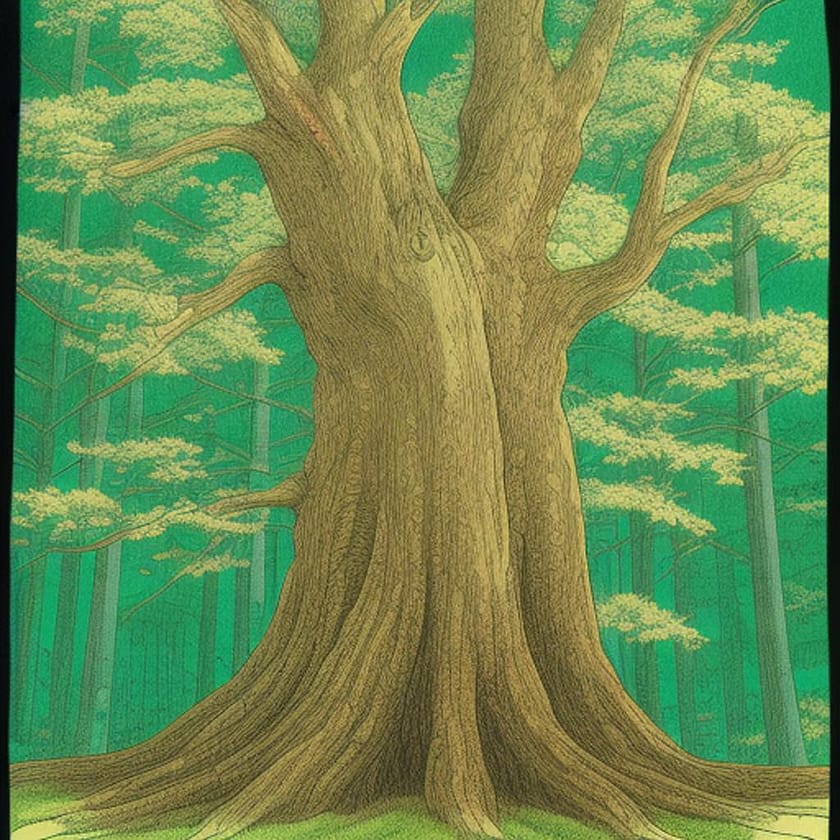What are the most characteric trees in North America
There are many characteristic tree species found in North America, each with its unique features and cultural significance. Some of the most recognizable and notable species include:
Redwood tree (Sequoia sempervirens)
The redwood tree is a type of tree that is found along the coast of California in the United States. It is known for its large size and its ability to grow to great heights. Redwoods are some of the tallest trees in the world and are considered to be an iconic species of the Pacific Northwest.
The redwood tree, specifically known as Sequoia sempervirens, can reach astonishing heights of over 350 feet, making it one of the tallest living organisms on the planet. These majestic trees can live for over 2,000 years, showcasing a remarkable resilience to both environmental changes and diseases. Their thick, fibrous bark can measure up to a foot in thickness, providing protection from wildfires and pests, which are common threats in their natural habitat.
The redwood’s unique ecosystem plays a critical role in the health of the environment. Their towering canopies create a microclimate that supports a diverse range of flora and fauna, including many species found nowhere else on Earth. The cool, damp air filled with moisture that drips from the leaves fosters a rich undergrowth of ferns and shrubs, while also providing a habitat for various birds, mammals, and amphibians.
One of the most fascinating aspects of redwoods is their ability to reproduce both sexually and asexually. While they do produce cones containing seeds like most coniferous trees, they can also sprout new trees from their roots, known as suckers. This ability to regenerate allows redwood groves to persist even after significant disturbances, such as fire or logging.
The redwood tree holds immense cultural significance as well. Many Native American tribes have revered these giants for thousands of years, considering them sacred beings. In modern times, they have become a symbol of conservation efforts, representing the need to protect these ancient forests from logging and development. Various national and state parks, such as Redwood National and State Parks, have been established to preserve these incredible trees and the ecosystems they support, allowing future generations to experience their grandeur and beauty.
Overall, the redwood tree is not just a remarkable specimen of nature due to its size and longevity; it also serves as a vital component of its environment, a cultural icon, and a reminder of the importance of conservation and stewardship of our natural world.
Maple tree (Acer spp.)
The maple tree is a type of tree that is found throughout North America. It is known for its bright fall foliage, which turns red, orange, and yellow in the fall. Maple trees are an important source of sap, which is used to make maple syrup.
The maple tree is a type of deciduous tree that is widely spread throughout North America, thriving in a variety of climates and soils. Renowned for its stunning autumn display, the foliage of maple trees transforms into vibrant shades of red, orange, and yellow, drawing admirers from near and far. This striking seasonal change is not only a visual spectacle but also an indicator of the tree’s health and the changing seasons.
Maple trees belong to the genus Acer, and there are over a hundred species, each with its own unique characteristics. Some of the most well-known species include the sugar maple (Acer saccharum), which is prized for its sap, and the red maple (Acer rubrum), recognized for its brilliant fall color. The sugar maple is particularly significant, as it produces a high concentration of sugar in its sap, making it the primary source for maple syrup production. This sweet, golden syrup is a staple in many households and is enjoyed on pancakes, waffles, and a variety of desserts.
In addition to their aesthetic and culinary importance, maple trees play a crucial role in their ecosystems. They provide habitat and food for various wildlife species, including birds, squirrels, and insects, while their broad canopies offer shade to the surrounding areas. Maple trees are also valued for their hard, durable wood, which is often used in furniture making, flooring, and even musical instruments.
Maple trees have cultural significance as well. They are often associated with Canadian identity, as the sugar maple is a national symbol of Canada, featured prominently on the country’s flag. In many regions, the onset of maple syrup season is celebrated with festivals that showcase the art of syrup making and the collaborative spirit of community.
Overall, the maple tree is not just a beautiful addition to the landscape; it is an integral part of the North American environment, economy, and cultural heritage. Its resilience and adaptability allow it to thrive in diverse conditions, ensuring that future generations will continue to appreciate its many gifts.
Oak tree (Quercus spp.)
The oak tree is a type of tree that is found throughout North America. It is known for its strong, durable wood and its large, lobed leaves. Oak trees are an important source of food and materials for many species of wildlife in North America.!
The oak tree, belonging to the genus Quercus, encompasses a variety of species that thrive across diverse habitats in North America. These majestic trees are often easily recognized by their distinctive lobed leaves, which vary in shape and size depending on the species. Common varieties include the white oak (Quercus alba), red oak (Quercus rubra), and black oak (Quercus velutina), each exhibiting unique characteristics and adaptations to their environments.
Ecological Importance
Oak trees play a pivotal role in their ecosystems. As keystone species, they provide essential habitat and food resources for a myriad of wildlife. The acorns produced by oak trees are a vital food source for many animals, including squirrels, deer, birds, and insects. These nutritious nuts are typically high in fats and carbohydrates, making them an excellent energy source, especially in the colder months when other food is scarce.
In addition to acorns, the foliage of oak trees supports various herbivores, such as caterpillars and beetles, which in turn attract insectivorous birds. The tree’s bark and cavities also serve as nesting sites for many species, including woodpeckers and other cavity-nesting birds. Moreover, oak trees support an extensive network of fungal associations, particularly with mycorrhizal fungi, which enhances nutrient absorption and promotes soil health.
Cultural and Economic Significance
Beyond their ecological contributions, oak trees hold significant cultural and economic value. The wood of oak trees is highly prized for its strength, durability, and beautiful grain, making it a popular choice for furniture, flooring, and cabinetry. White oak, in particular, is renowned for its resistance to water and rot, which makes it ideal for boat building and cooperage (barrel-making).
Culturally, oak trees have been revered throughout history. They are often symbols of strength, endurance, and longevity. In various Native American cultures, oak trees are associated with wisdom and are sometimes used in traditional ceremonies and crafts. Furthermore, many communities celebrate oak trees for their beauty and majesty, often planting them in parks and gardens as ornamental specimens.
Conservation Challenges
Despite their resilience, oak trees face numerous challenges in the modern environment. Habitat loss due to urban development, agricultural expansion, and climate change poses significant threats to oak populations. Invasive species, both plant and animal, can also disrupt the delicate balance of ecosystems in which oaks thrive, leading to declines in native biodiversity.
Conservation efforts are essential to protect these vital trees and their habitats. Sustainable forestry practices, reforestation initiatives, and the establishment of protected areas are crucial steps in ensuring that oak trees and the myriad of species that depend on them continue to flourish for generations to come.
In summary, oak trees are much more than just a common sight in North American landscapes. Their ecological, economic, and cultural significance makes them an indispensable part of the environment and human society. With ongoing efforts to preserve their habitats and promote sustainable practices, we can help ensure that these magnificent trees remain a vital part of our natural heritage.
Pine tree (Pinus spp.)
The pine tree is a type of tree that is found throughout North America. It is known for its long needles and its ability to grow in a variety of environments. Pine trees are an important source of wood and materials for many communities in North America.
The pine tree, belonging to the genus Pinus, encompasses a diverse group of coniferous trees that thrive in various environments across North America, from arid deserts to lush coastal forests and mountainous regions. With over 100 species found across the continent, pine trees exhibit a wide range of characteristics, including variations in height, bark texture, and needle length. Some of the most common species include the Eastern White Pine (Pinus strobus), the Ponderosa Pine (Pinus ponderosa), and the Longleaf Pine (Pinus palustris).
One of the distinctive features of pine trees is their needle-like leaves, which typically grow in clusters or bundles called fascicles. These needles can vary in length from just a few inches to over a foot long, depending on the species. The evergreen nature of pines allows them to retain their foliage throughout the year, providing year-round greenery and habitat for various wildlife. Additionally, the needles have adapted to withstand harsh conditions, with a waxy coating that helps reduce water loss and protect against cold temperatures.
Pine trees play a crucial ecological role, providing habitat and food for numerous species. Birds, mammals, and insects rely on pines for shelter and sustenance; for example, squirrels and woodpeckers are often found foraging among the branches. The cones produced by pine trees, which contain seeds, are also a critical food source for many animals, including squirrels, birds, and deer.
In addition to their ecological significance, pine trees are valuable economic resources. They are one of the most important sources of timber and wood products in North America, used for construction, furniture, paper, and various other materials. Pine wood is prized for its versatility, strength, and ease of working, making it a staple in the lumber industry. Beyond construction, pine sap is harvested for products such as turpentine and rosin, which have applications in various industries, including music, pharmaceuticals, and cooking.
Pine trees are also cherished for their aesthetic qualities and are commonly used in landscaping and urban planning. Their stately presence and distinctive shapes make them popular choices for parks, gardens, and residential areas. Moreover, they are often associated with holiday traditions, with many families using pine trees as Christmas trees due to their fragrant needles and sturdy branches.
However, like many tree species, pine trees face threats from pests and diseases. The mountain pine beetle, for instance, has devastated large tracts of forests in North America, particularly in the Rocky Mountains. Additionally, climate change poses new challenges as shifts in temperature and precipitation patterns can impact their growth and survival.
In conclusion, the pine tree is a resilient and adaptable species that plays a multifaceted role in both ecology and economy. Its ecological contributions, economic significance, and cultural associations make it an essential component of North America’s natural heritage. As communities continue to value and protect these remarkable trees, they will help ensure the health of forests and the many benefits they provide for generations to come.
Dogwood tree (Cornus spp.)
The dogwood tree is a type of tree that is found throughout North America. It is known for its bright pink or white flowers, which bloom in the spring. Dogwoods are often used as ornamental trees in parks and gardens.
The dogwood tree, belonging to the genus Cornus, is a popular choice for landscaping and ornamental purposes, thanks to its stunning floral displays and distinctive foliage. In addition to the well-known flowering dogwood (Cornus florida), which produces bright pink or white blooms, there are many other species within the genus, each with its unique characteristics. For example, the Pacific dogwood (Cornus nuttallii) is native to the western United States and features large, creamy-white flowers, while the Kousa dogwood (Cornus kousa), originating from East Asia, boasts star-shaped flowers and attractive, exfoliating bark.
The flowering period of dogwoods typically occurs in April and May, making them one of the first trees to bloom in spring. The flower-like structures, known as bracts, are actually modified leaves that surround small clusters of actual flowers. After flowering, dogwoods produce small, berry-like fruits that are enjoyed by birds and other wildlife, contributing to the ecosystem by providing a food source.
Aside from their aesthetic appeal, dogwoods offer several benefits to the environment. They are adaptable to various soil conditions and can thrive in both sun and partial shade, making them suitable for a wide range of landscapes. The trees also have strong root systems that help prevent soil erosion, promoting healthier ecosystems.
The leaves of dogwood trees turn a vibrant red or purple in the fall, adding seasonal interest to gardens and parks. This seasonal transformation, combined with their striking flowers, makes dogwoods an excellent choice for year-round beauty.
Culturally, dogwoods carry rich symbolism. In various traditions, they are associated with rebirth, renewal, and love. The tree’s unique shape and blooms have made it a favored motif in art and literature. Additionally, dogwoods hold significance in several religious contexts; for instance, in Christian symbolism, the tree is often associated with the crucifixion of Jesus, with its flowers believed to represent the cross.
However, dogwoods do face several challenges, including susceptibility to diseases such as dogwood anthracnose and various pests like the dogwood borer. As a result, proper care and management are essential to maintaining their health.
In summary, the dogwood tree is much more than just an ornamental plant; it is an important species that contributes to biodiversity, provides beauty throughout the seasons, and holds valuable cultural significance. Its presence in gardens and parks enriches our landscapes and connects us to nature.
These are just a few of the many characteristic trees found in North America, each with its own unique features and cultural significance.

Thank you for likes, shares and comments! 🌳🌴🌲🌵
Source OpenAI’s chatGPT Language Models, Dalle, AI trot and Fleeky
images Picsart and MIB
Invest in your future
Take time to learn
Embark on your journey in affiliate marketing and website creation alongside an incredible community and myself. Invest in your future by dedicating time to learn and earn. Take all the time you need to master the basics before aiming higher. Give it a try and sign up for free. You won't regret it! Discover the possibilities for yourself...


